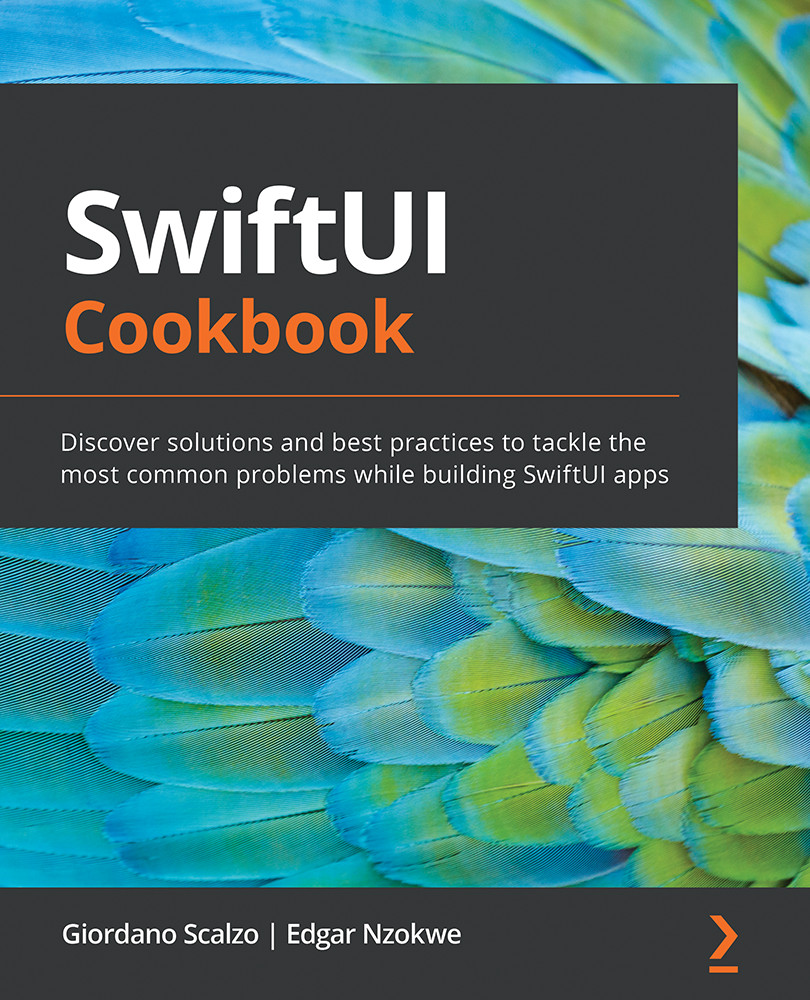-
Book Overview & Buying

-
Table Of Contents

SwiftUI Cookbook
By :

SwiftUI Cookbook
By:
Overview of this book
 Free Chapter
Free Chapter
 Sign In
Start Free Trial
Sign In
Start Free Trial

 Free Chapter
Free Chapter
In the previous chapters, we tried to collect different problems, and therefore different recipes, grouping them for a common theme.
In this chapter, instead, the recipes are not connected, apart from the fact that they are solutions for real-world problems.
We'll start viewing two ways of testing SwiftUI's views, and then we'll see how to localize the strings to create an international app.
Sometimes we must show some kind of documentation in the app, so we'll see how to present PDF documents.
One of the coolest features of an iPhone is the possibility of viewing and navigating the real world using its GPS and its map view; you can do this in your app using the MapKit framework, which, though it's not entirely integrated with SwiftUI, we'll see a recipe on how to wrap it and make it work nicely with SwiftUI.
With Swift 1.0, Xcode introduced the possibility of creating coding with Playground, decreasing...
